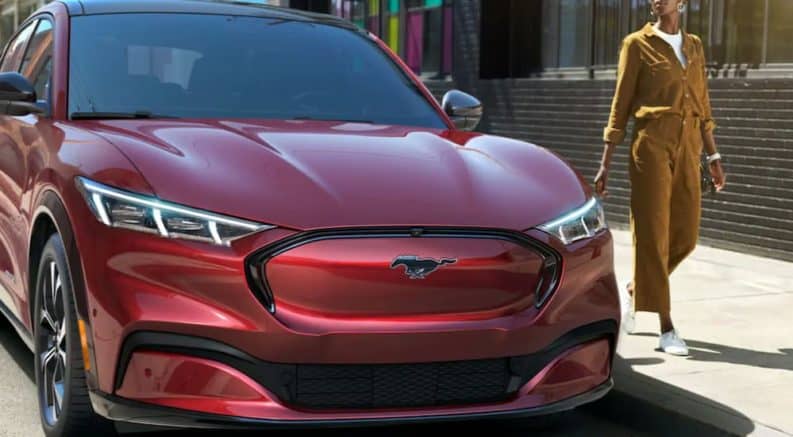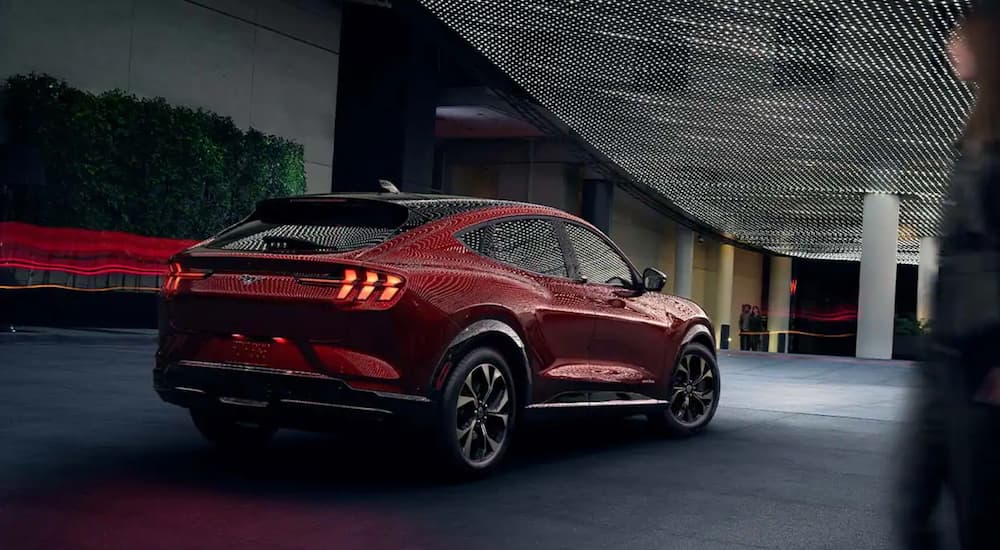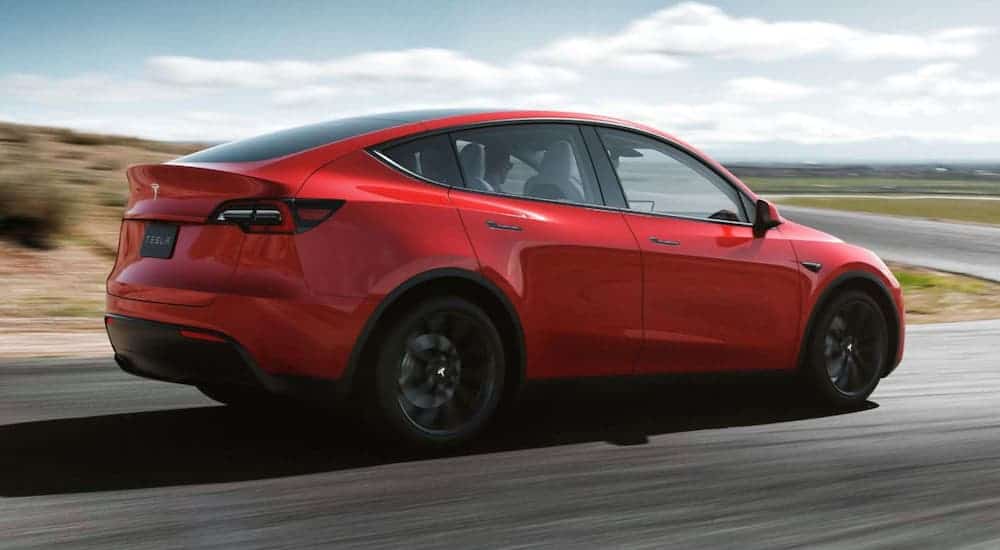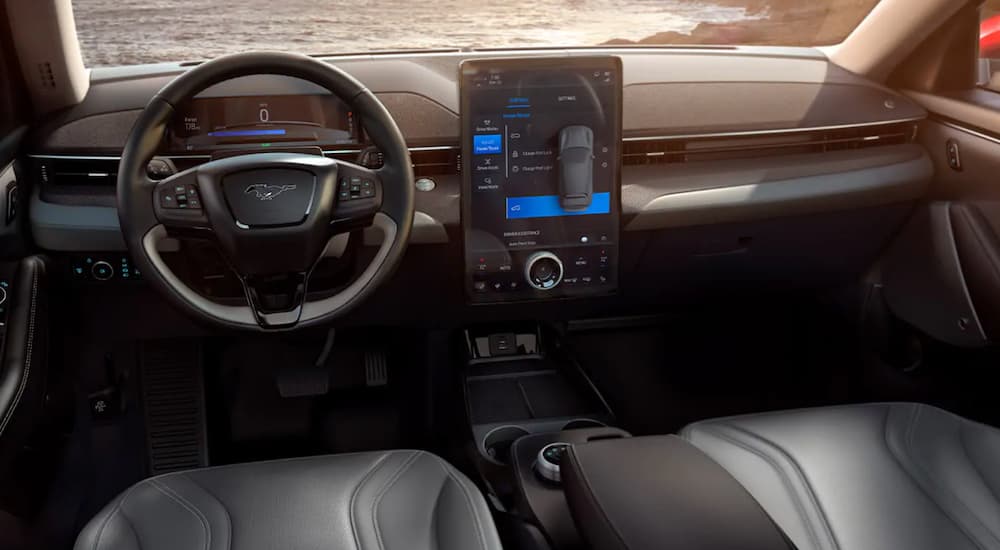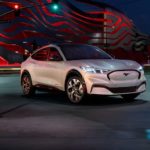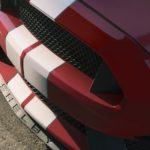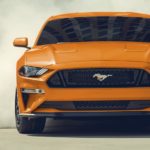Tesla has been at the top of the pack when it comes to all-electric vehicles as of late. The company’s sedan, its crossover Model Y, and just recently it made a splash with the release of its concept truck: the Cybertruck. However, it is no longer the only manufacturer in the mix for all-electric vehicles that are packed from the tire to roof with technology. Ford made its own announcement with the 2021 Ford Mustang Mach-E, a crossover SUV of its own, all while borrowing some styling elements of the Mustang. With both the Mustang Mach-E and the Tesla Model Y out, you will need to compare the 2021 Ford Mustang Mach-E vs Tesla Model Y if you are considering a purchase. Here is what you need to know about the two vehicles so far.
Vehicle Pricing
The MSRP currently for both of the vehicles has been set, but as neither of the two vehicles has been released yet, there may be some changes in the price point. The Tesla Model Y is set for release as a 2020 model while the 2021 Ford Mustang will hit in both 2020 and 2021, depending on the trim (if you want a performance-based Mustang Mach-E you’ll need to wait until 2021).
As of right now, the 2021 Ford Mustang Mach-E will have a starting MSRP of $43,895. This will be for the base trim that comes out the earliest. The later sports performance models will increase the price point to an MSRP of $60,500 (although this price might vary some when it goes into production later in 2020).
As for the Tesla Model Y, the entry MSRP for the vehicle is $48,000. It is a bit lower than the Mustang, which at this point, is to be expected. As Tesla focuses specifically on the production of electric vehicles and has been producing all-electric vehicles for some time now, the company has been able to fine-tune its production process. As the technology becomes more affordable, and Ford tweaks its production, the prices will likely level out. The top-level Tesla Model Y looks to have an MSRP of about $61,000.
Seating and Cargo Space
The cargo space for the Ford Mustang Mach-e is rather interesting. When the second-row seat is pushed down, it does have 59.6 cubic feet. When all the seats are up, the cargo space is 29 cubic feet. In general, electric vehicles have a tad less in the way of cargo space than your traditional fuel-injection model. Why? Because the batteries and other elements required to generate electricity take up a considerable amount of space. Over time these elements will become smaller, but for now, this is a bit of a trade-off (although it’s not a huge difference between this and other crossover-sized SUVs). One nice feature on the Mach-e is the front trunk feature. When you pop the hood for where the engine block typically is you’ll find some added cargo space. It’s just 4.8 cubic feet, but this can be the difference between having an extra suitcase for a trip or leaving it at home.
On the other hand, seating and cargo space on the Tesla Model Y, is more dependent on some add-ons you go for. The standard 5-seater crossover has a max cargo space of 66 cubic feet (and this is when the second seat is pushed down). However, Tesla does offer a 7-seat option. This essentially swaps out nearly all of the cargo space for a third row. The third row is small. Cramped might be a bit of an understatement. It’s designed for smaller individuals and children, so adults will have a hard time sitting in the third row. But, if you want the option, it is there for a price bump. So, if you want the 66 cubic feet, you’ll need to go with the 5-seater. If you want the 7-seats, you’ll almost completely take out all the cargo space.
Technology
What makes these two vehicles stand out is the kind of tech that goes into each. While Ford does have some of the tech features implemented on other models, this is the first time Ford has gone to the max with the kind of features it provides. Ford does not yet offer a completely self-driving vehicle (more on this with the Tesla), but there are several exceptional driver-assist technologies it does provide. This includes the Ford Co-Pilot360 and Ford Co-Pilot360 Assist 2.0, Active Park 2.0, and a 360-degree camera, all of which come together in the companies latest SYNC system. With Assist 2.0, the vehicle provides intelligent adaptive cruise control, so it can slow down and speed up based on traffic and the speed limit, evasive steering to assist with moving about traffic, and navigation. While it’s not full self-drive, it’s close. The Co-Pilot360 also includes cross-traffic alert, lane-keeping, reverse sensing, post-collision braking, reverse brake assist, and pre-collision assist with automatic emergency braking.
Tesla is famous for the kind of smart technology it has in its vehicle. The car uses a 160m ford facing radar to provide a long-distance view of objects, plus 12 ultrasonic sensors to detect vehicles surrounding the vehicle at all times. This helps to avoid possible accidents and also with parking. With the combination of varying technologies, Tesla has an autopilot feature. While designed to assist the driver, it helps make driving safer and easier.
All of the models do feature a driver assist feature, but if you’re interested in the full self-driving feature, that is an added expense. Full self-driving includes autopark, navigate on autopilot, automatic driving, the ability to recognize and respond to traffic lights and summon. Summon allows you to press a button on your key and the car will leave its parking space and find you (if you’re thinking of the 1989 Batman movie when Batman had the batmobile come to him you wouldn’t be far off. However, you’ll need to provide your own Batcave). This added feature is $7,000 on top of the listed MSRP.
Both vehicles offer a 15-inch touchscreen, and all technology is updated via WiFi.
The Automotive World Is Electric
Over the next several years, you will see any number of new electric vehicles coming out. Electric has several benefits over the older, fuel-injection vehicles, including less necessary maintenance, faster start-ups, more instant torque, and upgradable technology over WiFi. While electric vehicles will continue to improve regarding battery life, the Ford Mustang Mach-E and the Tesla Model Y are two of the current electric vehicles you will be able to drive in the next year. Of the two, does one stand out? Are you interested in the 100% self-driving feature on the Model Y, and is there a particular vehicle design you’re more drawn to? Is it more appealing than non-electric vehicles? Let us know in the comments section below. We’d love to get your opinion.

